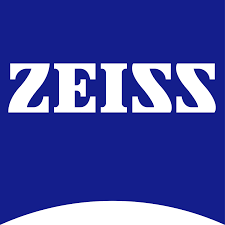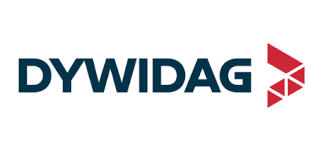Smart Implants
Published Date: 06 October 2025 | Report Code: smart-implants
Smart Implants Market Size, Share, Industry Trends and Forecast to 2033
This comprehensive report on Smart Implants offers an in‐depth analysis of market dynamics, technological advancements, segmentation, and regional performance across global markets for the forecast period 2024 to 2033. It covers key insights such as market size, CAGR, segmentation details, competitive landscape, and anticipated trends that will influence future growth and innovation.
| Metric | Value |
|---|---|
| Study Period | 2024 - 2033 |
| 2024 Market Size | $7.50 Billion |
| CAGR (2024-2033) | 8.2% |
| 2033 Market Size | $15.59 Billion |
| Top Companies | Medtronic, Stryker, Johnson & Johnson, Zimmer Biomet |
| Last Modified Date | 06 October 2025 |
Smart Implants (2024 - 2033)
Smart Implants Market Overview
Customize Smart Implants market research report
- ✔ Get in-depth analysis of Smart Implants market size, growth, and forecasts.
- ✔ Understand Smart Implants's regional dynamics and industry-specific trends.
- ✔ Identify potential applications, end-user demand, and growth segments in Smart Implants
What is the Market Size & CAGR of Smart Implants market in 2024?
Smart Implants Industry Analysis
Smart Implants Market Segmentation and Scope
Tell us your focus area and get a customized research report.
Smart Implants Market Analysis Report by Region
Europe Smart Implants:
Europe exhibits robust growth prospects with market figures rising from 2.21 in 2024 to an expected 4.59 by 2033. The region benefits from a well-integrated healthcare system and progressive regulatory standards that encourage the adoption of smart implant technology. Ongoing research collaborations between academic institutions and industry leaders are instrumental in sustaining market momentum and driving technological breakthroughs.Asia Pacific Smart Implants:
The Asia Pacific region is projected to show substantial growth, evolving from a modest market size of 1.45 in 2024 to an anticipated 3.01 by 2033. This expansion is driven by increasing investments in healthcare infrastructure, rising patient awareness, and a strong governmental push towards technological advancement in the medical sector. Rapid urbanization and the presence of emerging biotech hubs are further fueling innovation and product adoption.North America Smart Implants:
North America continues to be a dominant market, with projections indicating a market size increase from 2.71 in 2024 to 5.63 by 2033. Factors such as advanced healthcare infrastructure, high R&D investments, and a well-established regulatory framework contribute to the region's strong performance. Innovation in digital health and implant technology remains at the forefront of industry developments here.South America Smart Implants:
In South America, the Smart Implants market, reflected by a market size growth from 0.34 in 2024 to 0.70 by 2033, is experiencing steady development. Although the pace of growth is moderate compared to other regions, strategic partnerships, improved healthcare facilities, and government incentives are helping to expand market outreach in key countries within the region.Middle East & Africa Smart Implants:
The Middle East and Africa region, starting with a market size of 0.80 in 2024 and anticipated to reach 1.66 by 2033, is gradually embracing smart implant technologies. Market expansion in these areas is fostered by improving healthcare infrastructure, a rising focus on digital transformation in healthcare, and increasing investments aimed at modernizing medical services. These regions are set to emerge as promising growth engines with continued economic and technological improvements.Tell us your focus area and get a customized research report.
Smart Implants Market Analysis By Type
Global Smart Implants Market, By Type Market Analysis (2024 - 2033)
The analysis by type focuses on how product varieties such as orthopedic, neuro, and cardiovascular implants are structured to meet diverse clinical requirements. Orthopedic implants, for instance, show significant market share and continued growth due to advancements in simulation technologies and material sciences. Similarly, neuro implants are evolving with improved precision and diagnostic capabilities, while cardiovascular implants are being re-engineered for enhanced compatibility and performance. These distinctions help industry stakeholders allocate R&D resources effectively and optimize product portfolios based on patient demographics and clinical outcomes.
Smart Implants Market Analysis By Application
Global Smart Implants Market, By Application Market Analysis (2024 - 2033)
Application-based segmentation covers critical use cases such as pain management, neuro rehabilitation, cardiac monitoring, and orthopedic repair. The demand in pain management is rising owing to the increasing prevalence of chronic conditions and postoperative care requirements, while neuro rehabilitation applications are expanding with the aid of real-time feedback mechanisms. Cardiac monitoring implants are gaining traction with innovations in remote patient management, and orthopedic repair technologies continue to advance, providing precise biomechanical support. Each application area is subject to rigorous clinical testing and continuous innovation, which underpins regulatory approvals and fosters market trust.
Smart Implants Market Analysis By Distribution Channel
Global Smart Implants Market, By Distribution Channel Market Analysis (2024 - 2033)
The distribution channel segment examines the pathways through which smart implants reach end users. Hospitals remain the primary channel due to their role in conducting complex surgeries and post-operative care, benefiting from established supply chains and high-volume procurement practices. Clinics, with their focus on specialized treatments, and the emerging presence of online pharmacies, which streamline access to cutting-edge medical technology, are also integral. Analyzing these channels is crucial as they directly influence market penetration, pricing strategies, and patient accessibility. Tailored distribution strategies are necessary to cater to the diverse demands of urban and rural healthcare settings.
Smart Implants Market Analysis By Material
Global Smart Implants Market, By Material Market Analysis (2024 - 2033)
Material-based analysis distinguishes implants developed from metals, polymers, and ceramics. Metal implants offer superior strength and durability, making them ideal for high-stress applications, while polymer implants are prized for their lightweight characteristics and flexibility. Ceramic implants provide excellent biocompatibility and resistance to wear, ensuring longevity and patient safety. The choice of material directly impacts the implant's performance, cost-effectiveness, and regulatory compliance. Consequently, ongoing research in material science is pivotal for enhancing device functionality, reducing complication rates, and fostering innovation in this competitive market.
Smart Implants Market Analysis By Technology
Global Smart Implants Market, By Technology Market Analysis (2024 - 2033)
Technological segmentation focuses on the inherent smart capabilities integrated into implants, distinguishing between active, passive, and biomimetic systems. Active implants, equipped with embedded sensors and wireless communication, offer real-time monitoring and adaptive feedback. In contrast, passive implants rely on innovative design and material composition to deliver enhanced performance without active electronic components. Biomimetic implants, inspired by natural biological structures, seek to replicate the body’s intrinsic healing processes for improved compatibility and regenerative outcomes. Technology integration is key to improving diagnostic accuracy, patient outcomes, and long-term device functionality in the evolving landscape of smart implant solutions.
Smart Implants Market Trends and Future Forecast
Tell us your focus area and get a customized research report.
Global Market Leaders and Top Companies in Smart Implants Industry
Medtronic:
Medtronic is a global leader in medical technology, renowned for its innovative implantable devices that integrate advanced sensor technologies and wireless connectivity. Their commitment to R&D has consistently driven breakthroughs in smart implant solutions.Stryker:
Stryker is widely recognized for its extensive portfolio of orthopedic and neuro implant systems. The company's focus on cutting-edge technology and patient-centric design has cemented its position as a key player in the smart implant market.Johnson & Johnson:
Johnson & Johnson leverages its broad experience in healthcare to develop reliable and innovative smart implant solutions that prioritize patient safety and improved clinical outcomes.Zimmer Biomet:
Zimmer Biomet specializes in orthopedic and reconstructive implants enhanced with digital health technologies. Their strategic investments in smart therapies help drive market innovation and quality patient care.We're grateful to work with incredible clients.









FAQs
What is the market size of smart Implants?
The smart implants market is projected to reach $7.5 billion by 2033, growing at a CAGR of 8.2% from 2024. This growth reflects a significant demand for advanced implant technologies in various medical applications, enhancing patient care and outcomes.
What are the key market players or companies in the smart Implants industry?
Key players include Medtronic, Boston Scientific, Abbott Laboratories, and Zimmer Biomet, who dominate the smart implants market with innovative technology, extensive product lines, and strong distribution networks, driving continuous advancements in implantable devices.
What are the primary factors driving the growth in the smart Implants industry?
The growth is driven by technological advancements in medical devices, increasing prevalence of chronic diseases, growing geriatric population, and rising demand for minimally invasive surgeries, all of which enhance the adoption of smart implants.
Which region is the fastest Growing in the smart Implants?
The fastest-growing region is North America, projected to grow from $2.71 billion in 2024 to $5.63 billion in 2033. This growth is fueled by advanced healthcare infrastructure, ongoing research, and significant investments by key companies.
Does Consainsights provide customized market report data for the smart Implants industry?
Yes, Consainsights offers customized market report data tailored to specific requirements within the smart implants industry, allowing clients to gain insights into niche segments, competitive landscapes, and market forecasts.
What deliverables can I expect from this smart Implants market research project?
Deliverables include comprehensive reports with market analysis, growth projections, competitive landscape assessments, segment data, and regional insights, ensuring clients make informed decisions based on detailed data.
What are the market trends of smart Implants?
Key trends include increasing integration of AI in implants, rising demand for wireless monitoring devices, a focus on personalized medicine, and advancements in biomaterials, driving innovation and enhancing the functionality and efficacy of smart implants.
